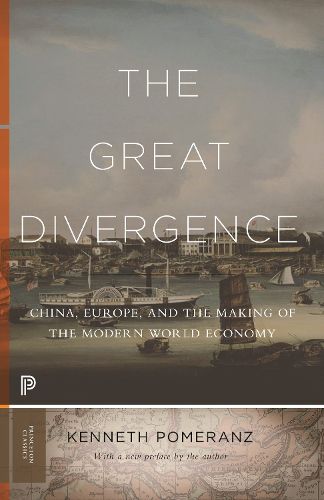Readings Newsletter
Become a Readings Member to make your shopping experience even easier.
Sign in or sign up for free!
You’re not far away from qualifying for FREE standard shipping within Australia
You’ve qualified for FREE standard shipping within Australia
The cart is loading…






A landmark comparative history of Europe and China that examines why the Industrial Revolution emerged in the West.
The Great Divergence sheds light on one of the great questions of history: Why did sustained industrial growth begin in Northwest Europe? Historian Kenneth Pomeranz shows that as recently as 1750, life expectancy, consumption, and product and factor markets were comparable in Europe and East Asia. Moreover, key regions in China and Japan were no worse off ecologically than those in Western Europe, with each region facing corresponding shortages of land-intensive products. Pomeranz’s comparative lens reveals the two critical factors resulting in Europe’s nineteenth-century divergence-the fortunate location of coal and access to trade with the New World. As East Asia’s economy stagnated, Europe narrowly escaped the same fate largely due to favourable resource stocks from underground and overseas.
This Princeton Classics edition includes a preface from the author and makes a powerful historical work available to new readers.
$9.00 standard shipping within Australia
FREE standard shipping within Australia for orders over $100.00
Express & International shipping calculated at checkout
A landmark comparative history of Europe and China that examines why the Industrial Revolution emerged in the West.
The Great Divergence sheds light on one of the great questions of history: Why did sustained industrial growth begin in Northwest Europe? Historian Kenneth Pomeranz shows that as recently as 1750, life expectancy, consumption, and product and factor markets were comparable in Europe and East Asia. Moreover, key regions in China and Japan were no worse off ecologically than those in Western Europe, with each region facing corresponding shortages of land-intensive products. Pomeranz’s comparative lens reveals the two critical factors resulting in Europe’s nineteenth-century divergence-the fortunate location of coal and access to trade with the New World. As East Asia’s economy stagnated, Europe narrowly escaped the same fate largely due to favourable resource stocks from underground and overseas.
This Princeton Classics edition includes a preface from the author and makes a powerful historical work available to new readers.